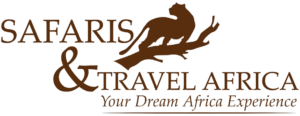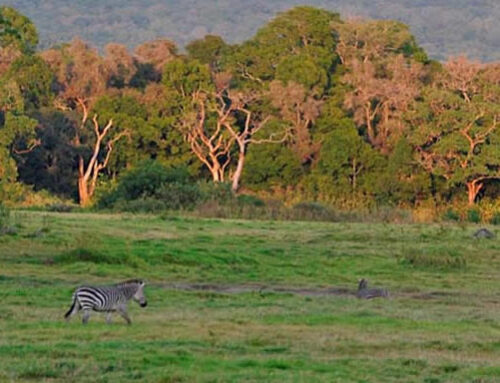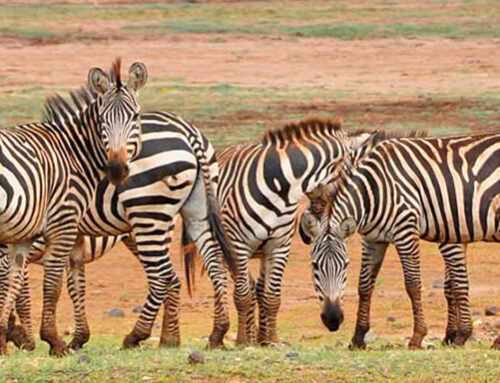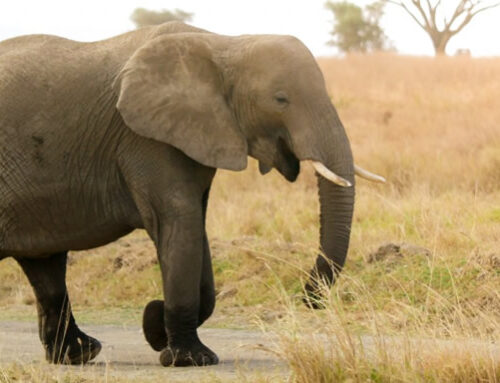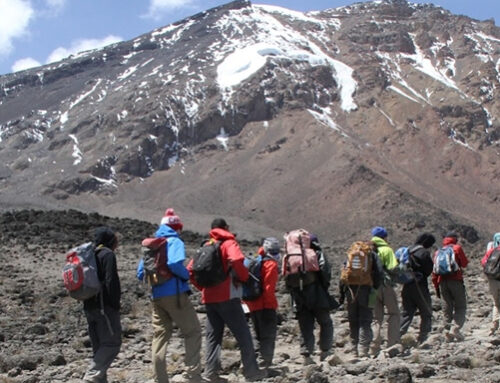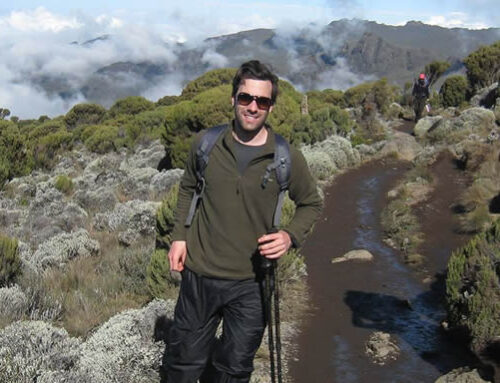LEMOSHO ROUTE
The Lemosho Route is the new route across the Shira Plateau which has quickly gained in popularity, to a point where it is now the third most popular route on the mountain. The Lemosho Route is the new trail that improves on the Shira Ridge, thus providing trekkers with both a walk in the pristine forest of West Kilimanjaro at the start of the trek and more time to acclimatize.
The Lemosho Route is the new route across the Shira Plateau which has quickly gained in popularity, to a point where it is now the third most popular route on the mountain. The Lemosho Route is the new trail that improves on the Shira Ridge, thus providing trekkers with both a walk in the pristine forest of West Kilimanjaro at the start of the trek and more time to acclimatize.
The Lemosho Route precedes an assault on the summit via Barranco Valley, Karanga Valley and Barafu Huts to Stella Point on the Barafu Route. The usual descent route is the Mweka Route. The main reason why this trail has overtaken the old Shira Route is, it is the first day when you are walking through the beautiful forest of Kilimanjaro’s lower slopes. Compare to Shira Route where you take a car all the way up to the plateau, thereby missing out not only on some fine forest, which you experience only through a car window but also on some useful acclimatization.
Duration for the safari is 8 days.
DAY 1: ARRIVAL – KILIMANJARO INTERNATIONAL AIRPORT
On arrival at Kilimanjaro Airport, met and assisted. Transfer to Sal Salinero Hotel or SG Resort for an overnight rest on bed and breakfast in readiness for the next trekking to Kilimanjaro. ( If your flight arrival destination is in Nairobi Jomo Kenyata International Airport or in DAR at Julius Kambarage Nyerere International Airport, please tell us so that we can advise additional transfer and Accommodation costs)
DAY 2: LONDOROSSI GATE (2100M) – MTI MKUBWA CAMP (2750M)
Hiking time: 3 hours | Habitat: Montane forest
Your day starts early with a briefing, followed by breakfast and a 2-hour drive from Moshi (910m) to Londorossi Park Gate (2100m). The guides and porters prepare and pack the supplies and your equipment in the village. You will receive a lunch pack and you can also buy mineral water in the village. From here a forest track requiring a 4WD vehicle leads to Lemosho Glades (2100m, 11km, 45 minutes). You will have a lunch stop about half way and will reach the Machame camping area in the late afternoon. Walk along forest trails to Mti Mkubwa (big tree) campsite, (2750m, 3 hours). Your porters (arriving at the camp site long before you) will have your tent set up on your arrival. In the evening the porters will boil drinking and washing water and the cook will prepare dinner, before you retire to your tent for the night. Night temperatures can already drop to freezing point at this campsite, B,L,D.
DAY 3: MTI MKUBWA CAMP (2750M) – SHIRA 2 CAMP (3840M)
Hiking time: 6.5 hours | Habitat: Moorland
You rise early at Mti Mkubwa camp and, after breakfast, you climb an hour or so to the top of the forest and then the trail gradually steepens and enters the giant heather moorland zone. Several streams are crossed. A gentle walk across the plateau leads to Shira 2-camp on moorland meadows next to a stream (3840m).
By now you will be able to see, in an easterly direction, the Western Breach with its stunning glaciers. The porters will boil drinking and washing water, before serving dinner. The night at this exposed camp will even be colder than the previous night, with temperatures dropping to well below freezing. Enjoy dinner and overnight, B,L,D.
DAY 4: SHIRA (3840M)-LAVA TOWER (4630M) – BARRANCO CAMP (3950M)
Hiking time: 7 hours | Distance: About 15 km’s | Habitat: Semi desert
The route now turns east into a semi desert and rocky landscape surrounding Lava Tower, where you reach an altitude of 4630m after about a 5 hours walk. Lunch is served in a designated area before ascending the rocky scree path to Lava Tower (4630m). Definitely the toughest day so far.
It is normally around this point, where for the first time, some climbers will start to feel symptoms of breathlessness, irritability and headaches. After lunch you descent again by almost 680m to the Barranco camping area and after reaching the high altitude of 4600m at Lava Tower, the true acclimatisation benefit of this day becomes clear. This descent to Barranco camp takes about 2 hours and offers great opportunities to take some beautiful photographs of the Western Breach and Breach Wall.
The camp is situated in a valley below the Breach and Great Barranco Wall, which should provide you with a memorable sunset while you wait for your dinner, B,L,D.
DAY 5: BARRANCO CAMP (3950M) – BARAFU CAMP (4550M)
Hiking time: 7 hours | Distance: About 13 km’s | Habitat: Alpine desert
After spending a night at the Great Barranco Wall (a very imposing sight at first), you make your way up this awesome looking obstacle, which in the end normally turns out to be easier than anticipated. Topping out just below the Heim Glacier, you now appreciate just how beautiful Kilimanjaro really is.
The route then heads down through the Karanga Valley over intervening ridges and valleys, and then joins up with the Mweka route. This is the preferred route down from the summit, so remember it. Turn left up the ridge and after another hour or so, you reach Barafu Hut. The last water stop on the route is the Karanga Valley, as there is no water at Barafu camp. Barafu is the Swahili word for “ice” and it is a bleak and inhospitable camping area to spend the night.
Totally exposed to the ever-present gales the tents are pitched on a narrow, stony, and dangerous ridge. Make sure that you familiarise yourself with the terrain before dark to avoid any accidents. The summit is now a further 1345m up and you will make the final ascent the same night. Prepare your equipment, ski stick and thermal clothing for your summit attempt.
This should include the replacement of your headlamp and camera batteries and make sure you have a spare set available as well. To prevent freezing it will be wise to carry your water in a thermal flask. Go to bed at round about 19h00 and try to get some precious rest and sleep, B,L,D.
DAY 6: SUMMIT ATTEMPT, BARAFU CAMP (4550M)-UHURU PEAK (5895M)-MWEKA (3100M)
Hiking time: 8 hours to reach Uhuru Peak 7/8 hours to descend to Mweka | Distance: About 7 km’s ascent – 23 km’s descent | Habitat: Stone scree and ice-capped summit
You will rise around 23h30, and after some tea and biscuits you shuffle off into the night. You will head in a northwesterly direction and ascend through heavy scree towards Stella Point on the crater rim. This 6-hour walk to Stella point is for many climbers, mentally and physically the most challenging on the route. At Stella Point (5685m) you will stop for a short rest and will be rewarded with the most magnificent sunrise you are ever likely to see (weather permitting).
From Stella Point you will normally encounter snow all the way on your 2-hour ascent to Uhuru Peak. The time you will spend on the summit will depend on the weather conditions. Do not stop here for too long, as it will be extremely difficult to start again due to cold and fatigue. Enjoy your accomplishment and a day to remember for the rest of your live. The walk back to Barafu from the summit, takes about 3 hours. Here you will have a well earned but short rest and collect the rest of your gear, before heading down to Mweka hut (3100m).
The route is not difficult and will take you down the rock and scree path into the moorland and eventually into the forest. The camp is situated in the upper forest and mist or rain can be expected in the late afternoon. Dinner and washing water will be prepared as well as drinking water, B,L,D.
DAY 7: MWEKA CAMP (3100M) – MWEKA GATE (1980M)
Hiking time: 3 hours | Distance: About 15 km’s | Habitat: Forest
After an early and well-deserved breakfast, it is a short 3-hour and scenic hike back to the Park gate. At Mweka gate you sign your name and details in a register. This is also where successful climbers receive their summit certificates. Those climbers who reached Stella Point (5685m) are issued with green certificates and those who reached Uhuru Peak (5895m) receive gold certificates.
From the Mweka Gate you will continue down into the Mweka village, normally a muddy 3 km (1 hour) hike. In the Mweka village you will be served a delicious hot lunch!! You now drive back to Moshi or Arusha for a long overdue hot shower, dinner and celebrations!! Overnight in Sal Salinero Hotel or SG Resort, B, L
DAY 8: DEPARTURE
After breakfast we provide transfer to Kilimanjaro Airport for your flight back home or continue with your safari schedule. (if your flight departure is at another international airport other than Kilimanjaro then please indicate this on your original inquiry.)
THE COST INCLUDES:
- Meet and Greet services
- Transfer from the Airport
- Guarantee price/guarantee trek
- 2 Nights accommodation at the base hotel in Arusha or Moshi
- Transfer to and from the base of the mountain
- Full board accommodation whilst on the trek. Meal plan as detailed: B=Breakfast,L=Lunch and D=Dinner
- Accommodations in camps/huts as per the itinerary
- Tents, Cooks, Porters, Water,
- All park entrance fees to include government taxes
- Service of English speaking professional guide(s) and skilled cook, porters
- Start and finish in Kilimanjaro International Airport.
- Treated water on the trek.
THE COST EXCLUDES:
- Laundry, tips, sleeping bags, beverages/drinks, accommodation before the trek and climbing gears
- International flights
- Visas
- Items of personal nature
- Any other extras not detailed in the above itinerary
Additional Remarks
- We may have to reroute the itinerary or accommodate in similar hotel/lodges in the case of non-availability.
- Park fees and airline prices may be changed without prior notice. This is beyond our control and any increase levied will be passed on to you.
- Prices quoted are based on the in US Dollars. Once confirmed on specific dates the Changes in dates may lead to a change in the trip or safari price.
- Passengers arriving to Tanzania must carry a valid Yellow Fever Vaccination Certificate.
Passengers should bring only soft sided bags on safaris
Identification may be required when boarding all flights including domestic and charter flights. Passengers should keep their passport in their carry-on bag to avoid delays
